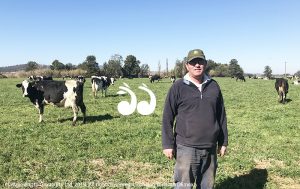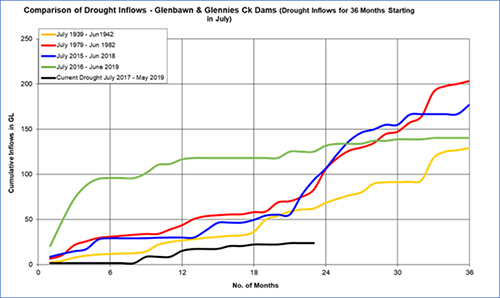Glenbawn To Release 20 Gigalitres
IN the next couple of weeks the Office of Environment and Heritage plan to release 20 gigalitres of water from Glenbawn Dam to help native Australian bass swim down river to spawn.
UPDATE: Dam Water Release Delayed.
The allocation of water for the bass represents almost twice the yearly allocation for all towns which draw water from the Hunter River.
Townships drawing from the Hunter River were allocated 10,832 megalitres, but in efforts to conserve water during the drought they have implemented water restrictions and have used less than half of the allocation.
The power station has an allocation of 36 gigalitres for a year and the proposed release of 20 gigalitres for the bass will be released over just a couple of weeks.
The Office of Environment and Heritage were not available for an interview to explain their plans, but Scott Wheatley, secretary of the Hunter Valley Water Users Association and Aberdeen dairy farmer was happy to be interviewed to ensure the community were aware of the proposal.

Scott Wheatley, secretary, Hunter Valley Water Users Association, on his dairy farm which backs onto the Hunter River in Aberdeen.
“There is 20 gigalitres each year, an environmental water allocation and it’s never been used in the Hunter, they used it in Paterson a few years ago, but as far as I’m aware the release of water didn’t even work, so it is an experiment anyway as to if the fish will go,” said Mr Wheatley.
“The water has to be cool for the bass to go over a monitoring weir near Liddell and apparently they need at least 30 centimetres of water over the weir, to simulate a flood to get over the top of the weir and swim down to the estuary to spawn,” he said.
“It’s only during the winter time from June until the middle of August otherwise the water gets too hot and they don’t go anyway,” Scott Wheatley said.
The weir near Liddell, is not owned or operated by the power station, it is a government weir which is used to monitor the flow of the Hunter River.
The Office of Environment and Heritage has assured water users that the allocation will not impact on other allocations, however water users are concerned that if the drought continues for another two or three years, the 20 gigalitres proposed for release now could be critical.
Yearly water allocations are based on the worst drought inflows into Glenbawn Dam and Glennies Creek Dam over a 36 month period, which begins in July.
The graph below from NSW Water tracks the flows during four droughts, with the current drought depicted by the black line at the bottom, which stops at May of this year.
During other drought periods there is a noticeable pick up with inflows during autumn and winter, however there has been no rain during the same period this year, causing further concern for water users.
The Office of Environment and Heritage has not advised when the water may be released, only that it may be in the next couple of weeks and water users have not been advised if they can use the water as supplementary allocations.
“Because we are under 100 percent allocation at the moment I suggested we should be able to access some of the water, especially for irrigators downstream from the weir, because from that point the water will just flow into the ocean,” said Scott Wheatley.
“Or if the people upstream can use some of the water, especially once the fish are over and the water is still coming down the river,” he said.
“We don’t know when they plan to release the water, just that it may be in the next couple of weeks, but we would need a few days notice to take pumps out of the river, because the debris that has been building up will clog the pumps and then there are farmers who walk their dairy cows across the river for milking and if they release the water without notifying us then the cows could be on the wrong side of the river for days and they will lose significant money not being able to milk,” Scott Wheatley said.
At a meeting with water users the Office of Environment and Heritage said they were considering a hole in the weir to allow the bass to pass downstream to spawn in the future.
Tags: bass, environment, fishing, water
 scone.com.au
scone.com.au